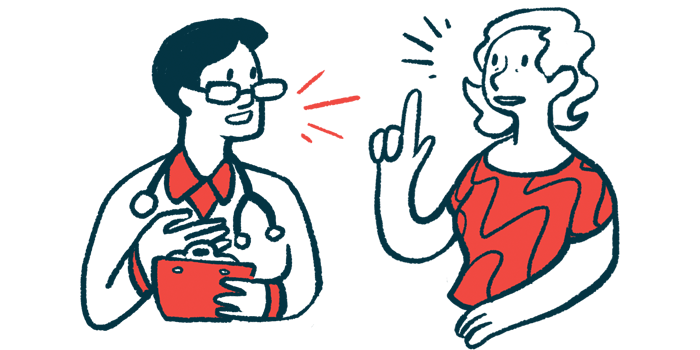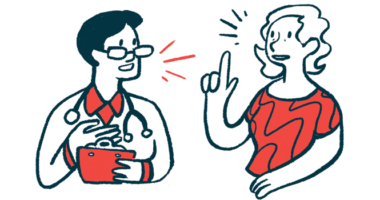Long-term use of Soliris for NMOSD found safe, effective in real world
Post-marketing data show approved therapy prevents relapses for 2 years

Long-term use of the approved therapy Soliris (eculizumab) safely and effectively prevents relapses in the real world in people with neuromyelitis optica spectrum disorder (NMOSD) and antibodies against the AQP4 protein.
That’s according to two-year interim data from an observational study in Japan, where Soliris was approved in 2019 for this indication.
“This interim analysis of a [post-marketing surveillance] study in Japan offers the first demonstration in a real-world setting that [Soliris] is effective in preventing relapses in patients with [AQP4-associated] NMOSD,” the researchers wrote.
These findings are in line with the results reported for more than 3.5 years of Soliris treatment in clinical trials, further supporting the therapy’s safety and efficacy in this patient population.
The study, “Long-term safety and effectiveness of eculizumab in patients with aquaporin-4 antibody-positive neuromyelitis optica spectrum disorder: a 2-year interim analysis of post-marketing surveillance in Japan,” was published in Therapeutic Advances in Neurological Disorders.
Mandatory 7-year study required for approved therapies in Japan
NMOSD is an autoimmune disease in which the immune system mistakenly turns against healthy nerve cells, causing damaging inflammation, primarily to the spinal cord and optic nerves. The optic nerves relay information between the eyes and the brain; inflammation can lead to symptoms such as pain and, ultimately, loss of clear vision.
Soliris is approved in Japan, as well as in the U.S., Canada, and the European Union, for treating adults with NMOSD who are positive for anti-AQP4 antibodies, the most common type of NMSOD-driving self-reactive antibodies. Treatment is given intravenously, or directly into the bloodstream, every other week.
Originally developed by Alexion Pharmaceuticals — now a subsidiary of AstraZeneca known as Alexion, AstraZeneca Rare Disease — the therapy works by blocking the complement cascade, a part of the immune system that becomes overly active in NMOSD, leading to damaging inflammation.
As such, Soliris is expected to ease inflammation, relieve symptoms, and reduce disease relapses.
The therapy’s safety and efficacy in AQP4-related NMOSD patients were demonstrated in the placebo-controlled Phase 3 PREVENT clinical trial (NCT01892345) and its open-label extension (OLE) study (NCT02003144).
Those results showed that Soliris significantly reduced the rate of relapses after six months on the medication — and that these effects were sustained for up to more than 3.5 years of continued treatment.
However, to date, the efficacy and safety of Soliris in a real-world setting, which includes a broader group of patients than those eligible to participate in clinical trials, “have not been fully established,” the researchers wrote.
With this in mind, a team of researchers in Japan conducted an interim analysis of data from the ongoing seven-year post-marketing surveillance study of Soliris in Japanese people with NMOSD and anti-AQP4 antibodies.
This type of study is mandatory after a therapy’s approval in Japan, and requires the manufacturer to follow patients over time to assess the safety and efficacy of their recently-approved therapy in the real world.
Few Japanese patients involved in trials of Soliris for NMOSD
Altogether, 147 patients in Japan were treated with Soliris between the time of its approval in November 2019 through the study cut-off in April 2022. Among them, 71 had at least one case report form filled in and were therefore included in the analysis.
The vast majority were women — 94.4% — and the mean disease duration among patients was 6.8 years. At the time of NMOSD diagnosis, nearly half (49.3%) had symptoms of spinal cord inflammation, and a comparable proportion (47.9%) had symptoms of optic nerve inflammation.
Participants were on Soliris for a mean of 44.6 weeks, or about 10 months, and up to nearly two years.
At the cut-off date, 83.1% were still receiving Soliris, while 12 patients (16.9%) had stopped treatment. Three did so due to side effects: two due to fever and one due to pulmonary hypertension, or high blood pressure in the blood vessels that supply the lungs.
A total of 19 patients (26.8%) experienced side effects. This translated into about 31 side effects per 100 patient-years, far less than the about 183 reported in PREVENT and its OLE study.
Patient-years is a measure of the number of people participating in a study and the amount of time they were followed. For example, 100 patient-years refer to data gathered from 100 patients who were followed for one year.
These findings in Japanese patients are consistent with the efficacy and safety results from the global phase 3 PREVENT study of [Soliris] versus placebo in [AQP4-related] NMOSD and its [extension study], in which Japanese participants were low in number.
In 10 patients (14.1%), side effects were considered likely related to treatment. None was a meningococcal infection, the most serious possible side effect of Soliris. The patient experiencing pulmonary hypertension also developed lupus, another autoimmune condition, that was thought to be related to Soliris treatment; that individual died seven months after the last dose.
Three patients were excluded from the effectiveness analysis because they had participated in the PREVENT study. While 75% of these patients had experienced a relapse in the two years prior to entry in the post-marketing study, only one had a relapse during the study’s two-year period.
In addition, the patients’ mean daily dose of the glucocorticoid prednisolone was reduced by 67.1% and the proportion of patients prescribed other immunosuppressive treatments dropped from 54.4% in the six months prior to starting Soliris to 47.5% in the 6-12 months thereafter.
Reductions also were observed in the use of other therapeutic approaches, such as intravenous immunoglobulin and plasma exchange; both procedures aim to reduce the levels of harmful self-reactive antibodies.
These interim results suggest that Soliris, when used for patients with NMOSD, may reduce the need for additional medications.
“These findings in Japanese patients are consistent with the efficacy and safety results from the global phase 3 PREVENT study of [Soliris] versus placebo in [AQP4-related] NMOSD and its OLE, in which Japanese participants were low in number,” the researchers wrote.
“Further data will become available over the course of the 7-year surveillance period to help understand the long-term impact of [Soliris] in Japanese patients with [AQP4-related] NMOSD,” the researchers concluded.








